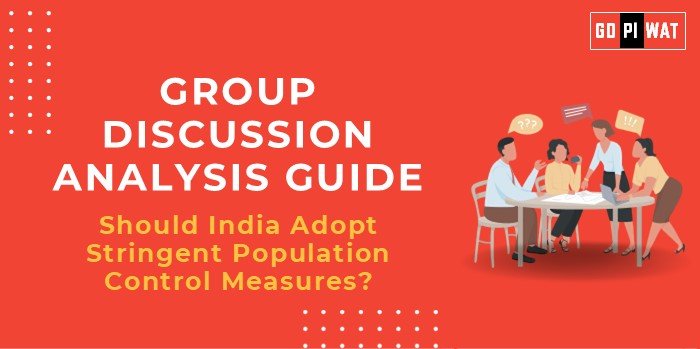📋 Should India Adopt Stringent Population Control Measures?
🌐 Introduction to Stringent Population Control in India
- 📖 Opening Context: India, currently the world’s most populous nation, faces significant challenges due to its rapid population growth. With over 1.4 billion citizens, issues such as resource scarcity, employment, healthcare access, and environmental degradation have intensified, creating urgency around population management.
- 📜 Topic Background: The debate on population control in India dates back to the 1950s when family planning initiatives began. However, unlike countries like China with stringent policies like the “One Child Policy,” India has largely adopted voluntary approaches. Today, the call for stricter measures has resurfaced, highlighting both potential benefits and concerns for democracy and individual rights.
📊 Quick Facts and Key Statistics
- 🌍 Population: 1.4 billion, making India the most populous country globally (World Bank 2023).
- 👩🎓 Youth Demographic: 65% under the age of 35, indicating a young but dependent population.
- 📉 Employment Gap: 8% unemployment rate, with high competition for limited job opportunities.
- 💧 Resource Strain: Only 4% of the world’s fresh water available for 18% of the global population, leading to significant water scarcity issues.
- 📈 Fertility Rate: 2.0 in urban areas but remains over 3.0 in rural regions, showing disparity in family planning reach.
🤝 Stakeholders and Their Roles
- 🏛️ Government of India: Develops and implements population policies, provides healthcare, and raises awareness about family planning.
- 🏥 Healthcare Sector: Plays a crucial role in administering family planning services and educating communities on reproductive health.
- 🌍 NGOs and Civil Societies: Facilitate population awareness programs and campaigns in rural areas where awareness is lower.
- 👨👩👧👦 Citizens: Individual and family choices are central, especially given India’s democratic and pluralistic structure.
- 🌐 International Organizations: Provide guidelines, funding, and support for sustainable population growth and reproductive health initiatives.
🏆 Achievements and Challenges
✨ Achievements
- 📉 Declining Fertility Rates: Efforts in urban areas have led to a decreased fertility rate, contributing to slower population growth.
- 📣 Awareness Programs: Initiatives like Mission Parivar Vikas have promoted family planning in high-focus districts.
- 🏥 Healthcare Access: Increased access to birth control in urban regions has helped families limit sizes.
⚠️ Challenges
- 🏡 Rural-Urban Divide: Higher fertility rates in rural areas show gaps in policy reach and education.
- 🛑 Cultural Resistance: Deep-rooted cultural norms favor larger families in some communities, challenging widespread adoption.
- 👩⚖️ Gender Inequality: Limited decision-making power for women in reproductive health in patriarchal households.
🌍 Global Comparisons
- 🇨🇳 China: The One Child Policy initially helped manage population growth, but led to aging issues and gender imbalances.
- 🇧🇩 Bangladesh: Focused on empowering women and educating about family planning, achieving a balanced population growth rate.
💬 Structured Arguments for Discussion
- 👍 Supporting Stance: “Implementing stringent population control measures will ensure sustainable resource allocation and improve living standards for future generations.”
- 👎 Opposing Stance: “Strict population control measures infringe on individual rights and may result in socio-economic issues such as an aging population and gender imbalance.”
- ⚖️ Balanced Perspective: “While stricter population policies may help curb resource strain, policies should respect individual rights and focus on awareness, education, and empowerment.”
🧠 Effective Discussion Approaches
- 📊 Data-Driven: “India’s population now exceeds 1.4 billion, straining resources and social services, a challenge further aggravated by an uneven distribution of population control resources.”
- 🌍 Contrast: “While urban regions see declining birth rates, rural areas continue to grow, creating a complex demographic and resource disparity.”
- 💡 Counter-Argument Handling: Emphasize alternatives like education and empowerment over control, and draw examples from other countries with successful non-coercive approaches.
📊 Strategic Analysis of Strengths and Weaknesses
- 💪 Strengths: Potential for sustainable growth, improved resource allocation, and environmental benefits.
- 🤔 Weaknesses: Cultural resistance, potential rights infringement, risk of aging population.
- 🚀 Opportunities: Using technology for targeted campaigns, empowering rural women through healthcare access.
- ⚠️ Threats: Social resistance, unintended economic impacts, possible demographic imbalances.
📚 Connecting with B-School Applications
Insights from this topic can inform projects in demographic analytics, sustainable development, or resource management. B-school students can explore strategies in healthcare management, public policy, and resource economics.
- ❓ Sample Interview Questions:
- “What are the economic implications of India’s growing population?”
- “Can voluntary family planning effectively address population growth without stricter measures?”
- 💡 Insights for B-School Students: Understanding population dynamics highlights the importance of balancing ethical considerations with sustainable solutions in governance and policy-making.


